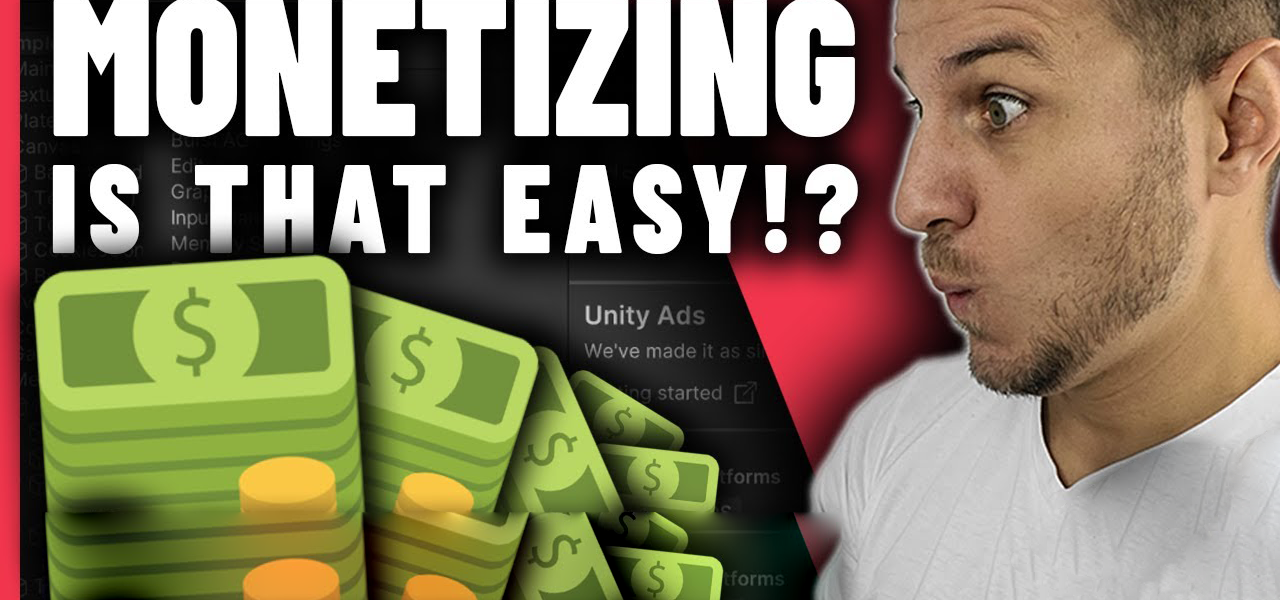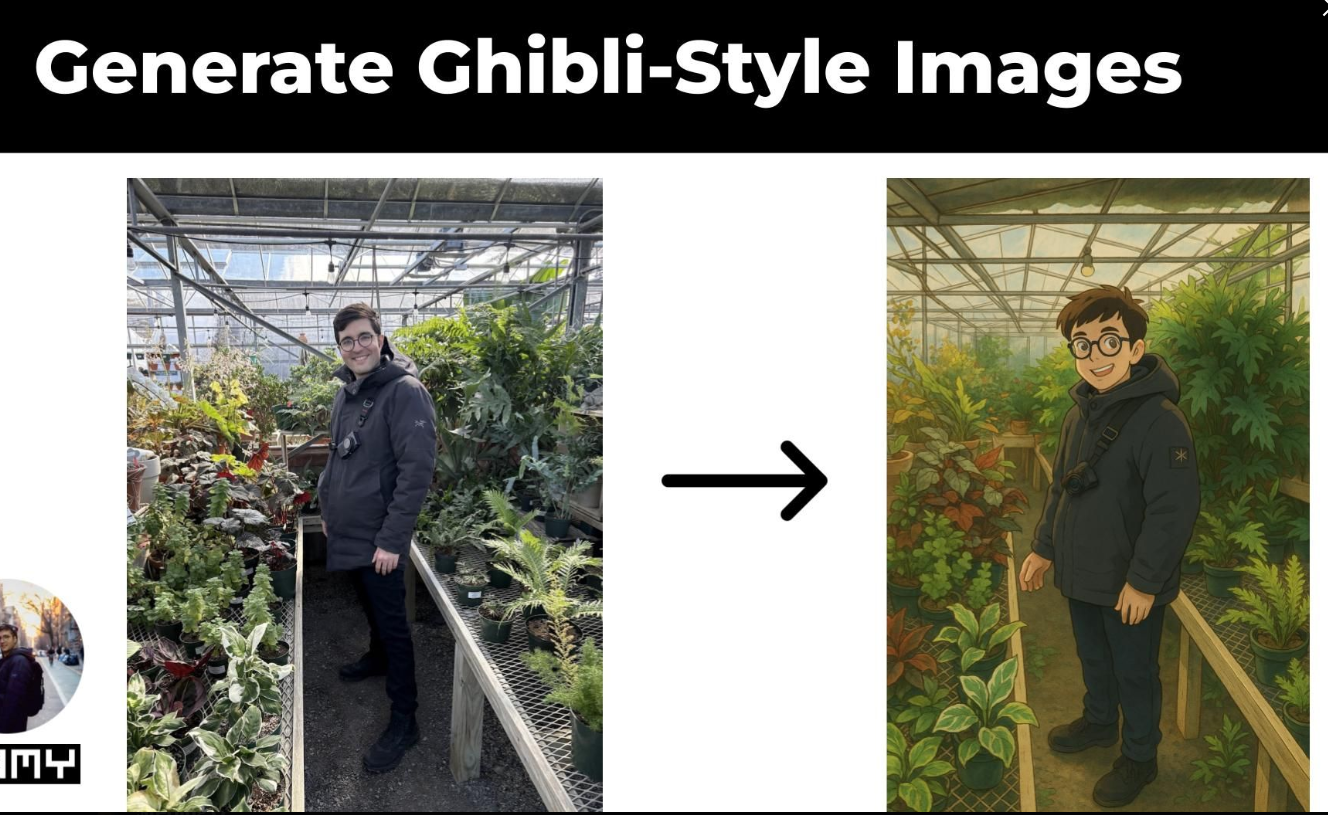Monetization is crucial for sustaining game development. Many developers face the challenge of making their games financially viable without compromising the user experience. With the advent of mobile and online gaming, monetization has become a vital part of the gaming ecosystem, as it allows developers to reinvest in the game, improve gameplay, and create additional content.
What is Game Monetization?
Game monetization is the process of generating revenue from a game. It typically involves different strategies, such as in-app purchases (IAP), ads, and subscriptions. In the past, monetization was limited to upfront purchases, but with the rise of mobile games, new models have emerged. These include ad-based models, microtransactions, and more. The challenge lies in implementing these monetization techniques while keeping players engaged and not detracting from their experience.
The Role of AI in Game Monetization
Artificial Intelligence (AI) has proven to be a game-changer across various industries, with the gaming sector being one of the primary beneficiaries of this transformative technology. Game development, once reliant on traditional methods of monetization, has now shifted towards leveraging AI tools to optimize revenue streams, enhance player experience, and streamline decision-making. The integration of AI into game monetization strategies has opened up new avenues for developers to maximize profitability while maintaining a seamless, enjoyable experience for players.
AI’s role in game monetization is multifaceted, impacting various aspects of how a game earns money, from in-app purchases to ad placements and player retention strategies. AI enables developers to dive deeper into player behavior analysis, helping them understand which aspects of the game are the most engaging or profitable. By analyzing vast amounts of player data, AI can assist developers in crafting personalized experiences, offering relevant rewards, and making smarter decisions about pricing and in-game offers.
How AI Transforms Game Monetization
The integration of AI in game monetization strategies begins with its ability to process and analyze massive amounts of data in real-time. AI tools track how players interact with the game, noting things like their playtime, in-game actions, spending patterns, and social interactions. This data is then used to predict future player behavior and create tailored monetization strategies that resonate with each player. Whether it’s offering specific in-app purchases or showing targeted ads, AI ensures that the monetization approach is customized and effective.
1. Personalization at Scale
AI allows developers to personalize the gaming experience on a massive scale. For example, by analyzing a player’s preferences and habits, AI can offer targeted suggestions for in-game purchases that are aligned with their interests. If a player frequently engages with a particular character or item, AI might recommend a premium version of that item, or offer exclusive content related to their playstyle.
This personalization doesn’t only extend to in-app purchases—it also applies to ad monetization. AI can analyze which types of ads are most likely to appeal to individual players based on their preferences and behavior, enhancing the chances that players will engage with them. AI helps make the ad experience feel less intrusive by ensuring that the ads are relevant and well-timed.
2. Dynamic Ad Placements
Traditional ad placements often rely on fixed schedules or intervals, which can be disruptive to gameplay. AI, however, can dynamically adjust when and how ads are shown based on a player’s behavior, preferences, and progress in the game. For example, AI might reduce the frequency of ads for players who have shown interest in purchasing premium content or who are deeply engaged in gameplay. Conversely, it might increase ad frequency for players who haven’t interacted with in-app purchases for some time.
AI also enables developers to choose the most effective ad formats (e.g., banner ads, interstitial ads, or rewarded video ads) based on player activity. For instance, if a player is nearing the end of a level, they might be shown a short ad in exchange for a reward like additional lives or in-game currency, keeping the player engaged while generating revenue.
3. Predictive Analytics for In-App Purchases (IAP)
In-app purchases (IAP) are one of the primary revenue generators for mobile and free-to-play games. AI tools can predict which players are most likely to make a purchase by analyzing their in-game behavior. This predictive model helps developers create targeted offers, such as discounts, time-limited sales, or personalized bundles, that encourage players to spend money.
For example, if AI recognizes that a player has been playing a game for a certain period and has reached a challenging point, it might suggest a power-up or special item that could help them progress, nudging them towards making a purchase. This AI-driven strategy ensures that the right offers reach the right players, increasing the likelihood of conversion.
4. Real-Time Pricing Optimization
AI tools can also optimize pricing in real-time based on player data and demand patterns. For example, AI can track how often players buy specific items and adjust prices accordingly. If an item is popular among a particular segment of players, AI can increase its price or create a demand surge by offering time-limited discounts.
This dynamic pricing model ensures that developers can maximize revenue by adjusting to shifts in demand and player behavior. Additionally, it prevents overpricing items that may drive players away while ensuring that highly sought-after items are priced appropriately for revenue maximization.
Why AI Tools are a Game Changer for Developers
AI tools are not just about enhancing monetization—they are about revolutionizing how developers approach their entire game economy. Before AI, monetization strategies were often broad and generalized, relying on assumptions about player behavior. Developers would typically test a few strategies, see what worked, and adjust accordingly. While this method was effective, it was also time-consuming and often lacked precision.
With AI, developers now have the power of real-time decision-making and data-driven insights. AI tools can provide developers with an ongoing analysis of how players interact with the game and how monetization strategies are performing. They can see which players are most engaged, which features generate the most revenue, and which strategies are the most effective at driving user retention and in-game purchases.
1. Reducing Churn Rate
One of the greatest challenges in game monetization is retaining players over the long term. AI tools help identify the signs of player churn, such as decreased engagement or longer periods of inactivity. By spotting these patterns early, developers can take proactive measures to re-engage players—whether through personalized offers, in-game rewards, or special events that encourage players to return. This increases the lifetime value (LTV) of each player and contributes to the overall success of the game.
2. Optimizing User Retention Strategies
AI also helps developers optimize strategies for keeping players invested in the game. By analyzing player retention data, AI can suggest adjustments to game mechanics, rewards, and progression systems. If certain game elements are found to drive higher engagement, AI can suggest expanding or enhancing those features. Conversely, if certain aspects lead to player drop-off, AI can recommend improvements, such as altering the difficulty level or adding new content.
3. Automating and Scaling Monetization Efforts
AI significantly reduces the manual effort required for monetization optimization. By automating tasks like adjusting in-game offers or placing ads at optimal times, AI allows developers to scale their monetization efforts more effectively. Developers no longer need to manually adjust ads, offers, or in-game purchases for different user segments—AI handles the heavy lifting, freeing up time for other important tasks.
The role of AI in game monetization cannot be overstated. It enables game developers to move beyond basic strategies and adopt more sophisticated, personalized approaches that cater to individual players’ needs and preferences. Whether it’s through predictive analytics for in-app purchases, dynamic ad placements, or real-time pricing adjustments, AI provides developers with the tools to maximize revenue while maintaining a smooth, enjoyable player experience. As AI continues to evolve, the gaming industry will only see further innovation in monetization strategies, offering even more opportunities for developers to generate sustainable income from their games.
By embracing AI, developers can unlock new monetization potentials, improve user retention, and create a more engaging and profitable gaming experience for all.
Types of AI Tools Used for Game Monetization
There are various AI-powered tools available for game monetization, each serving a specific purpose. Some focus on ads, others on player behavior analysis, and some provide dynamic pricing features.
- AI for In-App Purchases (IAP)
In-app purchases are a major source of revenue for mobile and online games. AI tools can help developers identify which in-app items are likely to sell well and target players who are most likely to make purchases. AI also helps in personalizing the in-app purchase offers based on player behavior, increasing the likelihood of conversion.
- AI for Dynamic Pricing and Discounts
AI tools can optimize the pricing of in-game items by analyzing the spending behavior of players. By adjusting prices dynamically, developers can maximize revenue while keeping the game accessible to different player segments. For example, AI might offer discounts or price reductions to players who are hesitant to make a purchase or to those who haven’t engaged with the game in a while.
- AI for Ad Monetization
AI-driven ad monetization tools help developers optimize their ad strategy. These tools use player behavior data to determine which types of ads are most likely to be clicked and viewed. By delivering the right ads to the right players, developers can maximize ad revenue without disrupting the gaming experience.
- AI for User Retention and Engagement
User retention is one of the most important factors in game monetization. AI tools can help developers retain players by analyzing player behavior and identifying the factors that lead to churn. By understanding why players leave, developers can implement personalized strategies to keep them engaged longer.
Personalized Recommendations and Offers
One of the most effective ways to increase monetization is by offering personalized in-game content or recommendations. AI can analyze a player’s previous interactions with the game, such as purchases, gameplay style, and progression, to offer tailored content or in-game offers that appeal to the player’s preferences.
- AI for Gamification and Player Behavior Analysis
Understanding how players interact with the game is key to successful monetization. AI tools can track player behavior in real-time and provide insights into areas where players may struggle or lose interest. With this information, developers can adjust gameplay mechanics, reward systems, or even monetize certain features more effectively.
Top AI Tools for Game Monetization
In the fast-evolving landscape of game development, leveraging AI tools is key to staying competitive and ensuring that monetization strategies are as effective as possible. AI tools help developers optimize in-game ad placements, personalize offers, and fine-tune the player experience to maximize revenue without sacrificing user satisfaction. Below, we delve deeper into some of the most prominent AI-powered tools available for game monetization, each offering unique features that can help developers achieve more personalized, efficient, and profitable results.
1. Chartboost
Chartboost is a widely recognized platform in the mobile gaming industry, known for its powerful ad monetization features. This tool uses AI to optimize ad placements in real-time based on a player’s behavior, preferences, and engagement patterns. Chartboost is highly focused on providing developers with insights into how ads are performing, allowing them to make data-driven decisions on which ad types or formats will resonate best with their audience.
-
Real-Time Data Analytics: Chartboost uses AI to track user behavior and provide real-time data, helping developers understand when and where ads should be placed for maximum effectiveness.
-
Targeted Ads: By leveraging player data, Chartboost ensures that ads are shown to the most relevant audience, increasing the chances of engagement and in-app purchases.
-
Cross-Promotion: Chartboost supports cross-promotion of other games or apps, which allows developers to monetize their own portfolio of games through ad placement, providing a cost-effective way to boost revenue across multiple titles.
The platform’s ability to adjust ad placements dynamically based on player activity makes it an essential tool for developers looking to optimize in-game advertisements while keeping players engaged.
2. Unity Ads
Unity Ads, a mobile advertising platform by Unity Technologies, is another key player in AI-driven monetization. Unity Ads makes use of AI to optimize the ad experience for players, ensuring that ads are both relevant and non-disruptive. Its integration with Unity, one of the most widely used game engines, makes it particularly attractive for developers who are already building their games within that ecosystem.
-
AI-Powered Ad Optimization: Unity Ads uses machine learning to ensure that the right type of ads is displayed to the right players. Whether it’s a video ad, interactive ad, or reward-based ad, Unity Ads makes sure that ads match the user’s preferences and behavior.
-
Player Segmentation: By analyzing player data, Unity Ads can segment players into different groups based on their engagement levels, purchase behavior, and in-game actions. This segmentation enables developers to target ads with precision.
-
Seamless Integration with Unity: Developers who are already using the Unity game engine can easily integrate Unity Ads, ensuring a smooth monetization experience with minimal technical complexity.
Unity Ads is ideal for developers looking for a comprehensive ad solution within the Unity ecosystem, with the added benefit of AI-enhanced targeting and ad optimization.
3. AdMob by Google
AdMob, a mobile ad platform from Google, has long been a popular choice for developers seeking to monetize their games through ads. AdMob utilizes AI to optimize ad targeting, enhance player engagement, and increase revenue opportunities.
-
Machine Learning for Ad Targeting: AdMob uses AI and machine learning to better understand player behavior and predict which ads will resonate most with a particular player, ensuring higher engagement rates.
-
Smart Ad Formats: With AI-driven insights, AdMob dynamically selects the most appropriate ad format—be it banner ads, interstitial ads, or rewarded video ads—depending on the player’s in-game activity.
-
Cross-Network Monetization: AdMob doesn’t just serve Google ads; it also integrates with third-party ad networks, providing developers with a wider range of monetization options and improving overall ad performance.
AdMob’s seamless integration with other Google services, such as Google Analytics and Firebase, makes it an invaluable tool for developers who want to track user behavior, optimize ads, and enhance the player experience simultaneously.
4. GameAnalytics
GameAnalytics is a powerful AI tool focused on providing detailed insights into player behavior, engagement, and retention patterns. This tool helps developers monitor how players interact with their games, which areas they enjoy the most, and where they might drop off. By understanding these patterns, developers can optimize their monetization strategies to increase revenue and player retention.
-
Player Data Tracking: GameAnalytics tracks various metrics such as playtime, in-game actions, and purchase behavior, providing developers with a clear picture of player engagement.
-
Actionable Insights: By analyzing player data, GameAnalytics provides developers with actionable insights, which can inform decisions on where to place ads, what in-app purchases to offer, and when to prompt players with rewards or new content.
-
Segmentation and Cohorts: Developers can segment their player base into different cohorts based on behavior patterns, allowing for targeted monetization strategies, such as personalized offers or discounts, to increase the chances of conversion.
GameAnalytics is a great tool for developers looking to dive deeper into player behavior data and use that knowledge to improve the monetization potential of their games.
5. Tapjoy
Tapjoy is an AI-powered monetization platform that specializes in rewarded advertising, where players earn rewards for engaging with ads. This platform is particularly popular in mobile gaming, where offering incentives for ad interactions can enhance both user experience and revenue generation.
-
Rewarded Ads: Tapjoy’s AI-driven platform enables the delivery of personalized and engaging rewarded ads, allowing players to earn in-game currency or exclusive items in exchange for watching ads or completing offers.
-
Personalized Offers: By tracking player behavior and preferences, Tapjoy delivers highly personalized offers and ads tailored to individual users, increasing the likelihood of engagement and monetization.
-
Advanced Analytics: Tapjoy provides detailed analytics on ad performance and player interactions, enabling developers to fine-tune their monetization strategies and improve overall ad revenue.
Tapjoy’s focus on rewarded ads allows developers to monetize games in a way that enhances rather than disrupts the player experience, providing a win-win scenario for both developers and players.
6. IronSource
IronSource is an AI-powered platform that specializes in ad mediation and monetization tools, helping developers maximize revenue from in-game advertisements. By utilizing AI to adjust ad placements in real-time, IronSource ensures that developers are always getting the most out of their ad inventory.
-
Dynamic Ad Placement Optimization: IronSource’s AI tools optimize the placement and timing of ads within a game, ensuring that ads are shown at the most effective moments to drive engagement without negatively affecting the player experience.
-
Cross-Platform Integration: IronSource supports monetization across multiple platforms, including mobile, console, and PC, allowing developers to monetize their games wherever they are played.
-
Comprehensive Ad Mediation: IronSource provides ad mediation services, which means developers can manage multiple ad networks from one platform, optimizing fill rates and maximizing ad revenue.
IronSource is particularly valuable for developers seeking a robust and flexible ad mediation platform that uses AI to increase the profitability of their game through smart ad placements and real-time optimization.
7. PlayFab
PlayFab, a platform developed by Microsoft, offers a suite of tools designed to help developers build, manage, and monetize their games. Its AI-powered tools enable real-time data analytics, personalized player experiences, and dynamic pricing, all of which help improve game monetization strategies.
-
In-App Purchases (IAP) and Dynamic Pricing: PlayFab’s AI tools help developers set optimal prices for in-app purchases based on player behavior and engagement levels, adjusting prices dynamically to maximize conversions.
-
Player Analytics: PlayFab provides in-depth analytics on player behavior, allowing developers to identify trends, predict future player actions, and optimize monetization strategies accordingly.
-
Seamless Integration: PlayFab integrates with other monetization platforms and game development tools, providing a comprehensive solution for developers looking to manage both game development and monetization in one place.
PlayFab’s AI tools are ideal for developers looking for a complete platform that can help them manage both game operations and monetization with minimal friction.
How to Choose the Right AI Tool for Your Game
Choosing the right AI tool depends on several factors, such as your game’s monetization model, your audience, and your budget.
- Understanding Your Game’s Monetization Needs
Before selecting an AI tool, it’s essential to understand what your game needs. Are you focusing on in-app purchases, ads, or both? Understanding your priorities will help you choose the best tool.
- Evaluating Tool Performance and User Feedback
It’s always wise to review user feedback and performance metrics of AI tools. Look for tools with proven success in similar games or genres.
- Cost vs. Return on Investment (ROI)
While AI tools can be expensive, it’s important to consider the return on investment. Tools that help you optimize monetization could pay for themselves by significantly increasing your revenue.
Common Challenges in AI-Driven Game Monetization
Despite the benefits, integrating AI tools for monetization comes with its own set of challenges.
- Data Privacy Concerns
AI tools rely on player data to make decisions. Developers must ensure that they comply with data protection regulations, such as GDPR, to avoid potential legal issues.
- Balancing Monetization with User Experience
The key challenge for game developers is to monetize their games without negatively affecting the user experience. Excessive ads or in-app purchase requests can annoy players and lead to churn.
- Managing Complexity in AI Systems
AI systems can be complex to manage and implement. Developers must be prepared for the learning curve and may need to invest time and resources into optimizing AI tools.
The Future of AI in Game Monetization
The future of AI in game monetization looks bright, with new technologies on the horizon.
- Emerging Trends in AI for Gaming
AI’s role in gaming is expanding. From predictive analytics to automated content generation, AI is shaping the future of game development and monetization strategies.
- Predictions for AI-Driven Monetization Models
As AI continues to evolve, we can expect even more sophisticated monetization models, such as predictive microtransactions and fully personalized in-game experiences.
Conclusion
AI tools are transforming game monetization by making it smarter, more personalized, and, most importantly, more profitable. With the ability to analyze vast amounts of player data, AI enables developers to create tailored experiences that boost user engagement and optimize revenue streams without compromising the player experience. The continuous advancements in AI technology promise even greater opportunities for developers to refine and enhance their monetization strategies.
As we move forward, AI will become an essential part of any successful game’s strategy, allowing developers to leverage its full potential for personalized offers, dynamic pricing, and real-time decision-making. By embracing AI, developers can not only boost their revenue but also create a more immersive and enjoyable gaming experience that keeps players coming back for more. In a rapidly changing gaming landscape, AI’s role in game monetization is no longer optional—it’s indispensable.
Frequently Asked Questions (FAQs)
1. What are the main types of AI tools for game monetization?
AI tools for game monetization typically focus on in-app purchases, ad monetization, dynamic pricing, user engagement, and personalized offers.
2. How do AI tools help with player retention?
AI tools analyze player behavior to identify patterns that lead to churn, allowing developers to implement strategies that keep players engaged.
3. What is the role of AI in dynamic pricing?
AI tools analyze player spending behavior and adjust in-game prices based on demand and player activity, maximizing revenue.
4. Are AI tools expensive to integrate into games?
While AI tools can be costly, their ability to optimize monetization strategies can lead to significant returns, making them a worthwhile investment for many developers.
5. Can AI tools work with existing game development platforms like Unity or Unreal Engine?
Yes, many AI tools are designed to integrate seamlessly with popular game development platforms such as Unity and Unreal Engine, making it easier for developers to enhance their monetization strategies.




